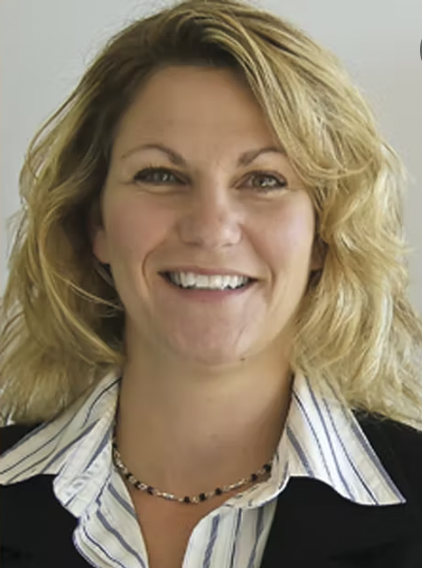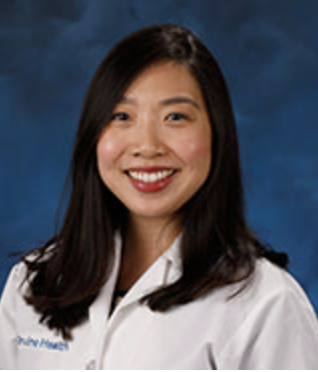Meet API's Newest Leaders!
Lisa-Jean Clifford
PI Summit Planning Committee

What inspired you to enter the field of pathology informatics?
I have always wanted to be in healthcare. My passion is to make a difference in the lives of patients. I started my education as pre-med but discovered that being hands-on with patients, especially in oncology, was too emotional for me. There are many incredible ways to make an impact in our industry, so I changed my major from pre-med to business and technology. The constant advancements in healthcare technology requires that the right combination of experts (such as pathologists, healthcare technologists, etc.) work together building and using solutions that have a meaningful impact on patient’s lives.
Why did you join API?
I joined API because I see this group as the foundation for bringing together the disciplines of pathology and technology. I am in full support of their mission to promote the field of pathology informatics through education and collaboration. Their ability to encourage professional relationship building while making inroads to future innovative product development is crucial to our industry. The avenues they provide for the planning, discovery, and adoption necessary to achieve significant forward momentum among colleagues who have the knowledge and ability to impact healthcare, is a vital role in the evolvement of pathology informatics.
What is your favorite feature of being part of API?
I enjoy the relationships that the API has helped me foster over the years. The deep connections to my colleagues and peers is invaluable. I also enjoy the mentoring opportunities – to encourage and guide a young professional along their career path is an honor. This association’s culture is not about ego or being in silos - it is about lifting up others to make a combined contribution to the field of pathology.
What kinds of projects are you currently engaged in?
Working with my company, Gestalt, I am focused on defining and delivering digital and AI solutions that are truly interoperable to drive efficiencies and accuracy, while having a significant impact on patient care. My belief is that the pathologist and pathology team is the most crucial part, and start, of the patient's journey to care. I also serve on the API Planning Committee, Content Committee, and volunteer to host some of the Mentoring Mondays events.
Steven Hart, PhD
Technology Standards and Innovation Committee Co-Chair

What inspired you to enter the field of pathology informatics?
My PhD work was in Pharmacogenetics, but one day in a lab meeting my advisor saw a paper in Cell, which used this new “next-generation sequencing” technology. We recognized that this kind of technology could allow us to finish the work we had proposed for a 5-year grant into a single run of the new machines. However, there weren’t many tools back then and even the papers that were published described these things called “command-line arguments” that I had never heard of before. It turns out, I needed to learn computer programming, Linux, and high-performance computing in addition to the biology I was learning in the Pharmacogenetics space. As it turns out, NGS exploded and there weren’t many people like me that could process the data into human interpretable results. This allowed me to get recruited to Mayo Clinic, where I started Collaborating with other investigators working in the field of cancer predisposition. I ended up leading the development of many of our genomics workflows, infrastructure initiatives, and technology standards as I continued to learn how to do bioinformatics for genomic sequencing.
Since new technology profoundly changed my career trajectory (and opportunities), I was intrigued to keep learning about new methods – looking for the next big wave. That’s when I found Artificial Intelligence (AI). AI has been around for some time, but with recent advances in computing hardware and cloud computing, the opportunities for applying these methods in the real world setting are finally possible. I saw that the biggest advances were in the imaging space, so I started looking for collaborators working with that type of data. I found some colleagues here who were trying to bring Digital Pathology to our practice, and thought this might be the next big thing. Since then, I’ve been hooked!
Why did you join API?
I joined API because, when I was starting my bioinformatics journey, I was alone. The closest thing that I had to mentorship was an online forum (Seqanswers.com) of my peers. We were all learning how to do this, together. When I came to Mayo, I was brought into a Department that had people like me and it helped me become a better bioinformatician. As I progressed, I started getting involved in bigger initiatives and societies outside of my organization. When I started doing digital pathology work is when I found out about API. I went to the API Summit and got to speak to a lot of other people that were entering this space as well, so I joined the Society. It’s kinda nice not living on an island and getting exposure to others that are in the same boat, fighting the same fight as me. People are always the most important resource, and API has a lot of good ones.
What is your favorite feature of being part of API?
My favorite reason for being a part of API are the opportunities I have to grow in leadership positions. Sometimes, we feel like we can only grow so much within our institutions, but API allows you to work and socialize with others from outside your organization. This is necessary for academics, since we often need letters of support for promotion from people outside our institutions. The opportunity for additional leadership at the API level really helps me stay engaged with the community and feel like I am better informed of the constantly evolving landscape of technologies, methods, and standards.
What kinds of projects are you currently engaged in?
My projects can be broadly classified into two areas: AI-development and Infrastructure. From the development perspective, my group is trying to build anomaly detection algorithms for whole slide images, rare event detection (for things like mycobacteria), predicting the unpredictable (e.g. mutation status, survival, and treatment response from H&E), as well as self-supervised training methods. Regarding infrastructure, I am interested in building interoperable cloud-based frameworks for clinical use cases of AI for digital pathology.
Let me unpack that, since there are some really important facets that I’d like to highlight. First, “interoperable” means making systems easily able to communicate with one another with minimal amounts of engineering. Standards like DICOM, FHIR, Open APIs, etc. are going to be crucial for building robust clinical systems, since there will never be a single entity that can provide all the best AI algorithms, workflow mangers, image management systems, etc.. Second, “cloud-based” is referring to using cloud-native technologies and design paradigms. This means that we build tools with scale in mind, and are not constrained by physical hardware. Third, “clinical use cases” is an important consideration since I think we all can agree that if we don’t get our algorithms into practice, then we aren’t really making improvements patient care. It’s fairly simple to make an algorithm run on a bioinformatician’s computer, but it is much more difficult to get it to run 1) On a shared compute infrastructure, 2) for people not familiar with the algorithm, 4) interacting with existing systems (like LIS, IMS, HER), 5) finding and training 24x7 IT support, and 6) addressing additional “what happened here” questions when it goes live and sees cases it’s never seen before, and 7) determine what quality metrics are essential and detect when drift occurs. Finally, the “AI” aspect! This is the most fun, but it’s not where most of the work is involved. It also doesn’t have to be AI. If I found a linear regression to work just as well with easy to acquire input variables, I wouldn’t want to throw that way just be cause it isn’t AI (though some would argue that it is).
Ji Yeon Kim, MD
API President-Elect

Kaiser Permanente
What inspired you to enter the field of pathology informatics?
I was lucky enough to be part of a new public magnet high school in the 1990s that loaned personal Apple computers to all of its students (1). Some of our projects involved programs like HyperCard or AutoCAD, which helped me see computers as natural extenders of our creativity and problem-solving skills. Later in life, I became interested in the use of lab data to explore topics in population health and personalized medicine, and pathology informatics seemed to provide the ideal toolkit for studying these relationships.
Why did you join API?
My mentor and then fellowship director, Dr. John Gilbertson, regularly took me and other pathology residents to the API annual meetings; at that time, it felt like we were part of a small camp of early enthusiasts for something that was about to become really big. There was great comradery in the group, and I got to meet many people who made significant contributions to the field. I know other professional societies have now added subgroups and meeting content for pathology informatics, but I think API was the early pioneer, leader, and advocate for us to be where we are today as a professional group.
What is your favorite feature of being part of API?
Like Dr. Jennifer Woo, who was featured in last month’s newsletter, I really enjoy meeting other pathology informaticists from around the country, and hearing stories about their everyday successes and challenges. Even when we work in different subspecialties and diverse practice settings, we have so much in common, and there are still not many people in healthcare who understand what we do.
What has been your experience as a woman pathology informaticist?
In my organization, many of our physician leaders come from primary care, and it's not often they meet a pathologist outside the laboratory, much less a pathology informaticist. I've found it's helpful when introducing myself to give a few examples of what I and my team can help with, whether it's making a test electronically orderable in the EMR or creating a reflex algorithm for collecting that second lactic acid. Cultivating working relationships outside the laboratory has also been really helpful for getting ahead of problems and supporting strong governance processes around the many change requests that come our way. In terms of being a woman, I think both men and women have gendered cultures - norms of behavior and social interactions - that we often take for granted, but these can become noticeable and sometimes even uncomfortable when dominating any group dynamics. I try to learn from other strong female leaders who have helped model for me how to use clear communication, time management, and safe spaces for discourse, to drive towards good decisions everyone can live with.
What role do you see for yourself as a leader in the field and as President-Elect of API?
I would venture to say we are all leaders, given how new the field still is, and how rapidly it's continuing to grow! I finally sat for my clinical informatics board exam last year in the middle of the pandemic and selling my house, so I also feel a certain kinship with recent graduates. As President-Elect of API this year, I hope to learn from our community members on where we might push the needle forwards – there are so many exciting projects involving A.I. and machine learning, while at the same time, many laboratories struggle with basic tasks such as managing paper faxes for outside lab reports. As someone practicing in the community, I appreciate finding and sharing inspiration for both the uncommon and everyday puzzles!
What advice do you have for women entering the field of pathology informatics?
You may be the only pathology informaticist in your organization, or you may be part of a team. Either way, it will likely be impossible to find a guide or mentor who has walked in your exact professional shoes. No matter! Making connections early on with other women in the workplace can be extremely beneficial in helping you start to navigate your new work environment. As you begin learning how you can add value to your organization or employer, it’s important to grow your support network, and find both male and female role models and allies who can give you feedback and help you improve. Remember not to compare yourself to any single person, and always, always keep learning! (Some helpful reading: Hardball for Women: Winning at the Game of Business)
Jennifer Woo, MD
Membership Committee Chair

UCI Health, Blood Bank and Transfusion Medicine
What inspired you to enter the field of pathology informatics?
I was inspired to enter the field of pathology informatics to leverage technology for quality improvement and patient safety.
Why did you join API?
To be part of an inspiring community of individuals who are data-driven, innovative, and committed to quality patient care.
What is your favorite feature of being part of API?
The most valuable feature is the ability to connect with other pathology informaticians/informaticists across the nation. There is so much to learn from this community! Many of us are facing the same informatics challenges, and being able to share our experiences is invaluable. The educational resources are also wonderful.
What advice do you have for those entering the field of pathology informatics?
Being well versed in informatics is crucial since it is inextricably part of our professional lives as pathologists. Joining the API is the best way to learn how informatics can be applied in both practical and research settings.
|